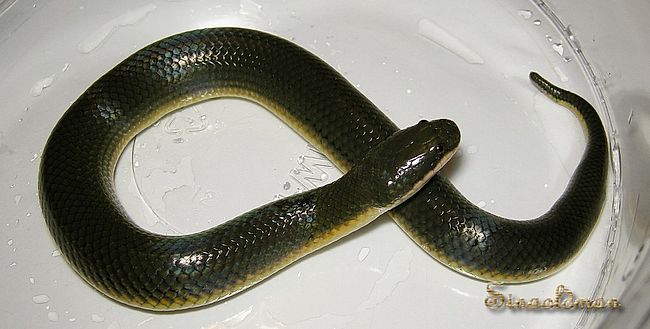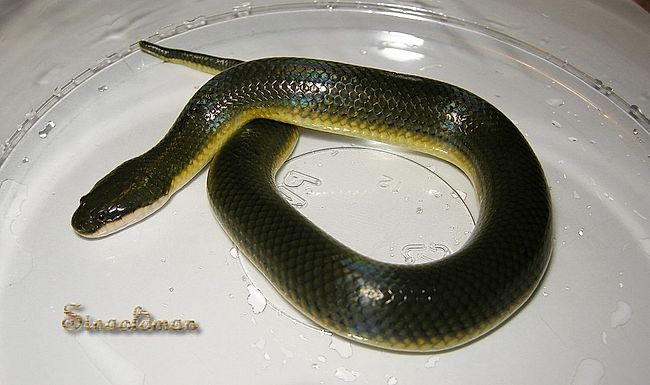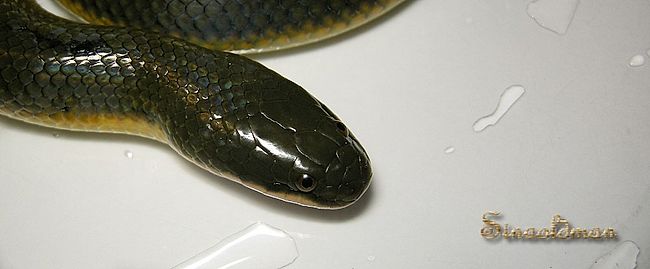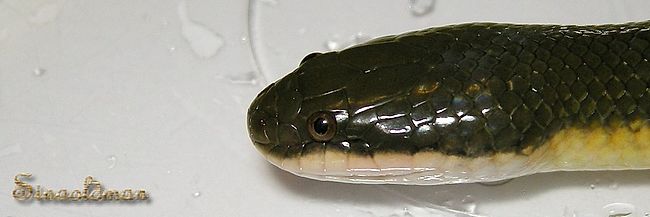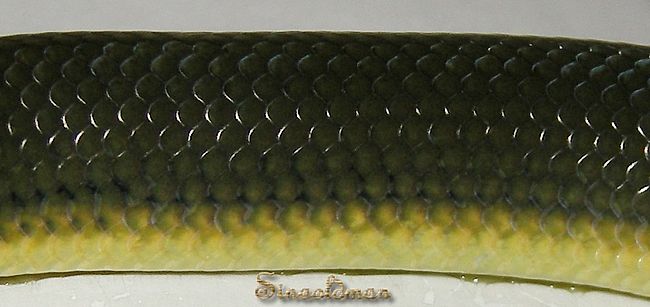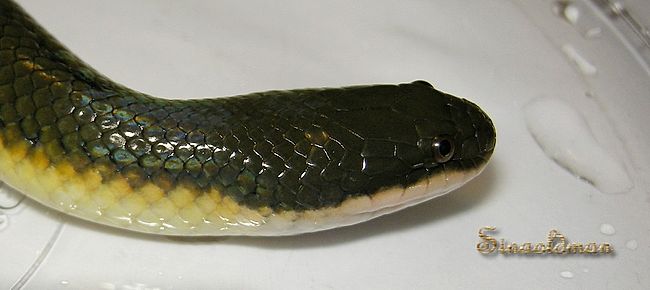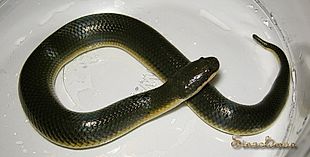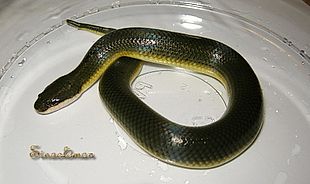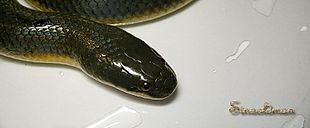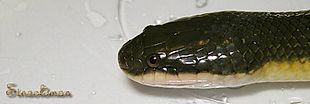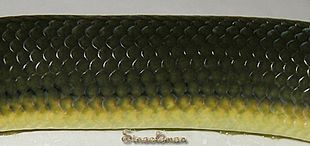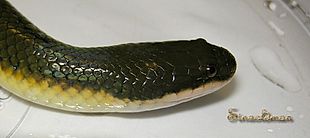Hypsiscopus plumbea
Plumbeous Water Snake
(鉛色)水蛇 (qian1se4shui3she2)
Status: Protected (Category III)
Mildly venomous
Videos
Family
Colubridae, subfamily Homalopsinae
Max. length
72 cm
Occurrence in Taiwan
Throughout Taiwan, up to 500 m altitude. Endangered.
Global Distribution
South China (Hainan, Anhui, Fujian, Guangdong, Guangxi, Hunan, Hubei, Jiangxi, Jiangsu, Zhejiang), Taiwan, N. Vietnam.
Description
Small snake; total length up to 72 cm. There are 15-19 (19 at mid-body) rows of smooth and glossy scales. Head is broad oval; body is short and stout, somewhat flattened; tail is short. Both nostrils (with a lid each) and eyes face upward. Eye is small, beady, and bulging; iris is red brown to dark brown and pupil is black and inconspicuous. Tongue is red, tinged with black, and fork tips are dark gray to black. The nasals are not separated; there is only one internasal. Upper head is uniform olive to dark olive green and the edge of mouth is dirty white or cream, with a distinct line of demarcation from upper head, extending from nose to corner of mouth and posteriorly along neck. Upper body and tail is uniform gray olive to dark olive green; the first to third scale rows are dirty white to dirty yellow and may be very lightly tinged with salmon. Ventral head is white to cream, usually possesses gray to dark gray margins. Ventral body is gray white to light dirty yellow, occasionally with horizontal lines of gray or diffuse black and a median series of dark spots; there may be a dark mid-ventral line at junction of subcaudals. Anal scale is divided and subcaudals are paired.
Biology & Ecology
Homalopsine snakes are usually considered a subfamily, the Homalopsinae, of the family Colubridae. All of them
have valvular nostrils combined with a mechanism for complete mouth closure, and a trachea that can extend
to the internal nostrils within the mouth, all of which facilitate their underwater lifestyle. Most also have
small eyes located close to the top of the head, enlarged rear maxillary teeth that are grooved and other
anatomical characteristics that suggest they all share a common ancestor. (Source)
Hypsiscopus plumbea is a crepuscular or nocturnal species found in fresh water, such as ponds, rice paddies,
and ditches. Although it spends most of its time in the water, it is considered the most terrestrial of all Homalopsinae.
Fish and frogs are its staple foods. In late spring to summer, females give birth to 2-19 young, each measuring about 12 cm in length. It is known to strike without provocation and, in contrast to most species, is capable of jumping or striking over distances considerably greater than its body length. When excited or attempting to escape from an intruder, it moves rapidly by a series of erratic lateral jumps.
This is an opistoglyphous (= rear-fanged, see footnote (1)) species, and mildly venomous. Its venom is not fatal to humans, but bites may lead to swellings, itching and/or allergic reactions.
Etymology
Hypsiscopus: from the Greek Hypsi (high or lofty) and scopus (view) in reference to the location of the eyes atop the head in those snakes.
plumbea means "plumbeous" (lead-colored).
The Chinese name 鉛色水蛇 (qian1se4shui3she2) means "Lead-colored (鉛色) water snake (水蛇)".
Footnotes
(1) "Opisthoglyphous snakes are similar to aglyphous (fangless) snakes, but possess weak venom, which is
injected by means of a pair of enlarged teeth at the back of the maxillae (upper jaw). These "fangs" typically
point backwards rather than straight down, possess a groove which channels venom into the prey, and are located
roughly halfway back in the mouth, which has led to the vernacular
name of "rear-fanged snakes". (Source)
This species resembles M. chinensis, but M. chinensis is peppered with black spots along the dorsal ridge (on the back)
Further Info






